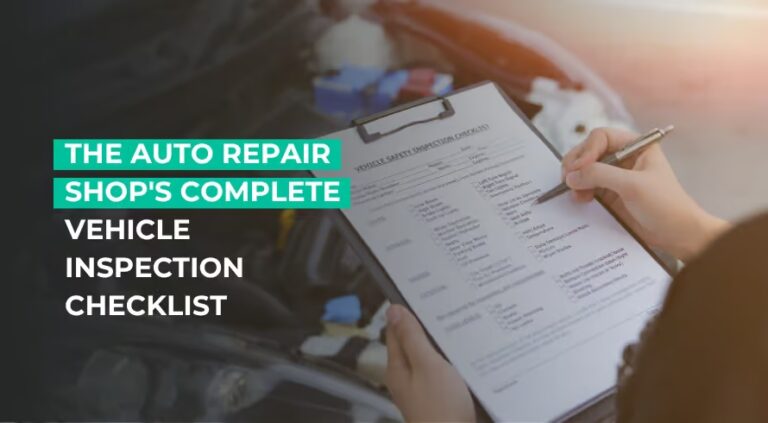In the ever-evolving landscape of automotive repair, staying abreast of industry standards and practices is essential for success. One critical aspect that auto repair shops must navigate is BIT (Bureau of Inspection and Testing) inspection, a process that ensures vehicles meet safety and environmental regulations. Understanding BIT inspection is not only vital for compliance but also plays a significant role in enhancing customer trust and business reputation. This comprehensive guide aims to demystify the BIT inspection process, providing auto repair professionals with the knowledge necessary to effectively prepare for and manage inspections. From understanding the specific requirements and procedures involved to developing best practices for maintaining compliance, this article equips repair shop owners and technicians with the insights needed to navigate the complexities of BIT inspections confidently. By fostering a proactive approach to compliance, auto repair shops can enhance operational efficiency, reduce the risk of penalties, and ultimately contribute to a safer driving environment. Whether you are a seasoned professional or new to the industry, this guide will serve as an invaluable resource for mastering BIT inspection and ensuring your shop’s ongoing success.
Overview of BIT Inspection Procedures Explained
BIT inspection procedures serve as a critical framework for ensuring the safety and compliance of commercial vehicles. These inspections are designed to systematically evaluate various vehicle components, including brakes, lights, steering mechanisms, and tires, to confirm they meet mandated safety standards. Understanding BIT inspection involves familiarizing oneself with both the technical requirements and the regulatory guidelines set forth by local transportation authorities. This ensures that auto repair shops can effectively prepare vehicles for inspection, addressing any potential issues proactively.
The inspection process typically involves a combination of visual assessments and functional tests, often culminating in a detailed report that outlines the vehicle’s condition. Repair shops play a vital role in this process by conducting pre-inspection checks and performing necessary repairs to enhance the likelihood of passing the BIT inspection. Moreover, understanding BIT inspection fosters a culture of safety among repair technicians and operators, ultimately contributing to the overall reliability of commercial transportation systems.
Importance of BIT Inspection for Safety
The role of BIT inspections in promoting safety cannot be overstated, as they provide a comprehensive evaluation of a vehicle’s operational integrity before it is allowed on the road. By identifying and rectifying potential hazards, repair shops contribute significantly to reducing the risk of accidents caused by mechanical failures. Understanding BIT inspection not only enhances the safety of the vehicles serviced but also instills confidence in fleet operators who rely on these vehicles for their daily operations. Ensuring that every commercial vehicle adheres to the established safety standards can lead to a decrease in liability claims and insurance costs, ultimately benefiting both operators and consumers alike.
Additionally, regular BIT inspections foster a culture of accountability and compliance within the transportation industry. When auto repair shops prioritize completing thorough inspections and addressing issues promptly, they help maintain the overall safety standards that govern commercial transportation. This proactive approach not only enhances vehicle reliability but also reinforces the importance of safety in the public’s perception of commercial transport. By embedding these practices within their operational protocols, repair shops play a crucial role in safeguarding roadways and promoting the well-being of all drivers and passengers.
Common Issues Identified During Inspection
During inspections, several issues frequently arise that can have significant implications for vehicle safety and performance. Common findings include worn brake components, fluid leaks, and inadequate tire tread depth, all of which can compromise a vehicle’s ability to operate safely. Additionally, electrical system failures and malfunctioning lights are often noted, highlighting the importance of a well-functioning electrical system for both visibility and communication with other road users. Identifying these issues early allows repair shops to recommend timely interventions, ensuring vehicles remain compliant with safety regulations.
Moreover, the inspection process often reveals discrepancies in maintenance records or the use of substandard parts, which can lead to future complications. Addressing such issues not only enhances the vehicle’s reliability but also helps repair shops build trust with their clients through transparent communication and adherence to safety standards. By thoroughly understanding BIT inspection, repair shops can provide valuable insights to fleet operators about the state of their vehicles, ultimately fostering a commitment to proactive maintenance and safety within the industry.
In conclusion, understanding BIT inspection is essential for auto repair shops aiming to ensure compliance with safety regulations and to enhance the quality of service provided to their customers. By familiarizing themselves with the BIT inspection process, shop owners and technicians can identify potential issues before they escalate, streamline their operations, and ultimately foster a safer driving environment. As the automotive industry continues to evolve, staying informed about inspection requirements and best practices will not only safeguard the longevity of vehicles but also bolster the reputation and reliability of the repair shop itself. Prioritizing BIT inspections is not just a regulatory obligation; it is a commitment to excellence in the auto repair profession.


